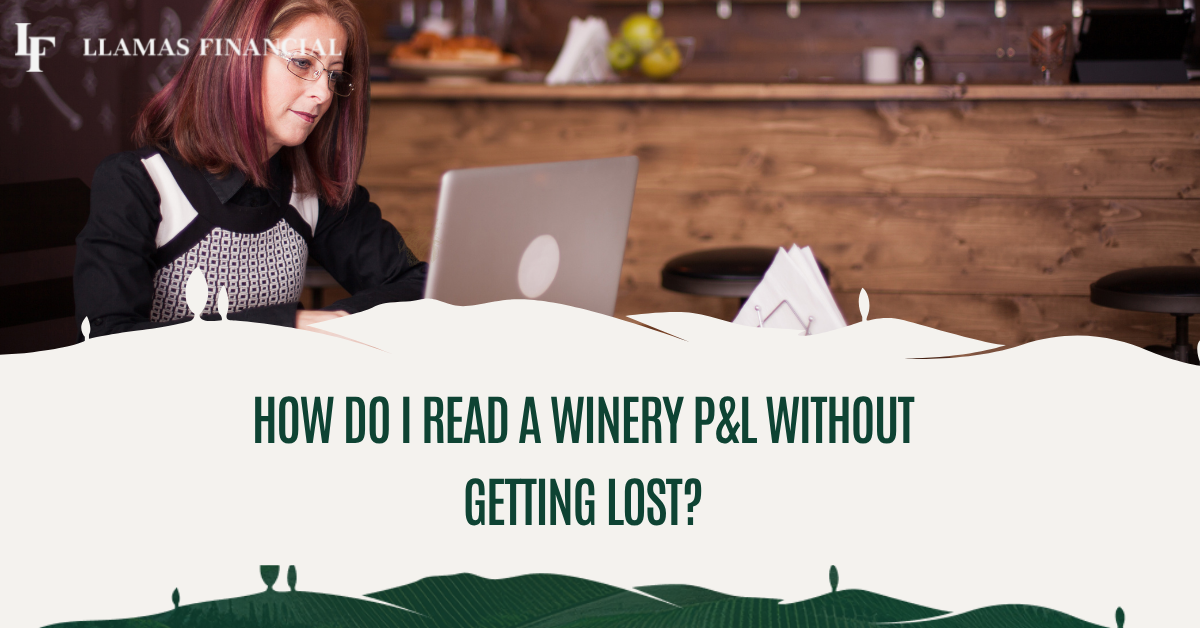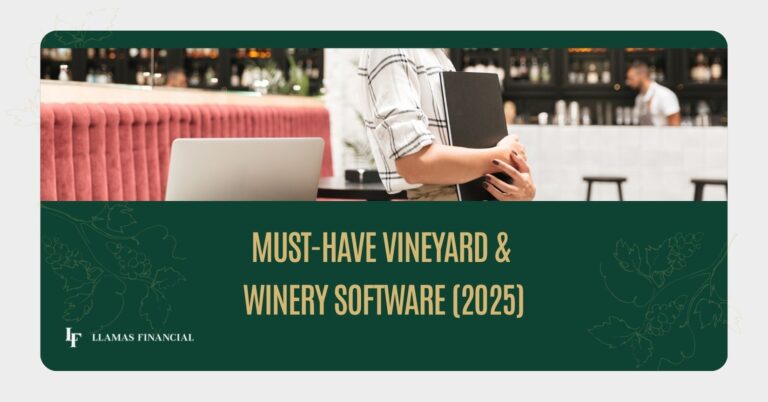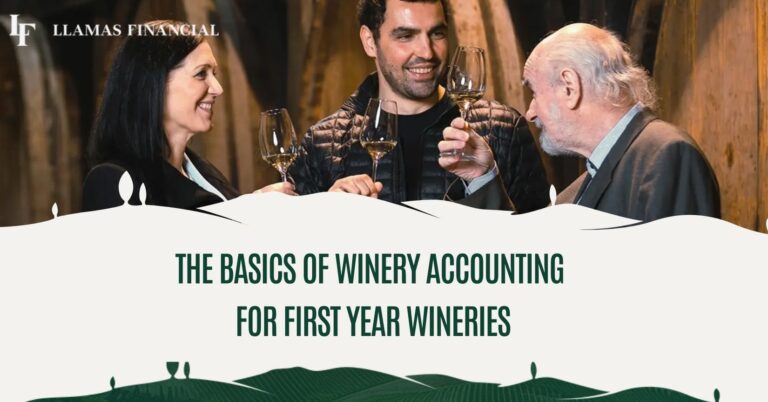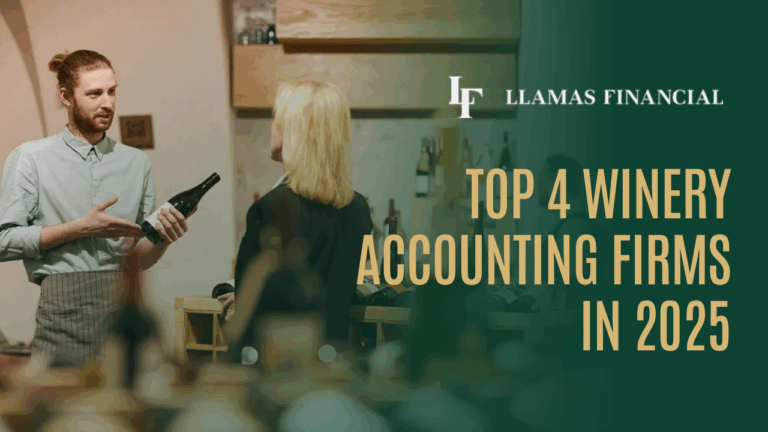For most winery owners, the profit and loss statement (P&L) is the financial document that causes the most confusion. On the surface, it looks straightforward: income on top, expenses in the middle, and profit at the bottom.
But if you’ve ever looked at your winery’s P&L and thought, this doesn’t make sense, you’re not alone.That’s because a winery P&L isn’t like the P&L of a restaurant, shop, or tech startup. Wine production has long lead times, seasonal expenses, and multiple revenue streams.
Grapes may be harvested one year, fermented the next, bottled the year after, and sold years later. When you have costs hitting long before the sales show up, the numbers on your P&L can feel misleading unless you know how to read them.
Why Winery P&Ls Are Different
A traditional P&L is designed for businesses with immediate revenue. For example, a coffee shop buys beans in the morning, sells lattes all day, and records revenue and expenses in the same month.
Wineries don’t work that way. You’re paying for barrels, bottles, vineyard labor, and storage months (sometimes years) before you earn a single dollar from that vintage.
This creates timing differences that make your bottom line look worse than it really is. You might see large losses on paper during production years even though you’re building inventory that will generate future revenue.
Without understanding that nuance, a winery owner might panic and think the business is failing when in reality, the financials just need to be read through a winery-specific lens.
Breaking Down the Winery P&L
To make sense of your P&L, start by looking at it in sections:
Revenue
Separate revenue streams are key. A well-prepared P&L will show tasting room sales, wine club income, wholesale distribution, and direct-to-consumer shipping all broken out. This gives you visibility into which channel is driving the most profit. Many winery owners assume wholesale will be their biggest opportunity, but the margins are often thinner than direct-to-consumer. Without revenue separated by channel, it’s hard to know where to focus.
Cost of Goods Sold (COGS)
Here’s where things get tricky. In a winery, COGS doesn’t just include grapes. It should capture everything directly tied to production: vineyard costs allocated to production, barrels, corks, bottles, labels, and production labor. The challenge is that much of this spending happens long before the wine is sold. A winery accountant knows how to match these costs with the revenue they generate, often through inventory accounting methods that smooth the timing.
Gross Profit
Gross profit shows what’s left after subtracting COGS from revenue. This is where you start to see how your margins compare across channels. For example, a $30 bottle sold in the tasting room might net far more gross profit than that same bottle sold wholesale for $18. Without looking at gross profit by channel, you might misjudge the health of your business.
Operating Expenses
This category covers tasting room payroll, marketing, events, insurance, and general overhead. Many wineries underestimate how much goes into this bucket. A good winery accountant will make sure these expenses are separated in a way that helps you evaluate return on investment. For instance, is your wine club marketing spend generating enough recurring members to justify itself?
Net Income
Finally, net income is what most people focus on — but in wineries, it can be misleading. Remember, if you’re investing heavily in a vintage that hasn’t yet been sold, your P&L may show losses even though your balance sheet shows valuable inventory being built. That’s why winery owners should never rely on the net income line alone.
The Common Traps Winery Owners Fall Into
- Confusing losses with failure
If your first few vintages show losses, that doesn’t necessarily mean your winery is unsustainable. It often means you’re still in the production phase and haven’t yet seen the revenue. - Overlooking channel performance
If your tasting room is profitable but wholesale is dragging margins down, you need to see that broken out clearly. A generic P&L won’t show you that distinction. - Treating all costs as overhead
When vineyard and production expenses are lumped into one big “supplies” category, you lose visibility into your true cost per case.
How a Winery Accountant Makes It Easier
Interpreting a winery P&L requires more than just bookkeeping. A winery accountant knows how to structure your accounts so the story makes sense. They’ll separate your revenue channels, match production costs to sales, and explain why your net income may not tell the full picture.
Most importantly, they’ll help you focus on the numbers that matter: cost per case, gross margin by channel, and cash flow timing. Instead of feeling lost in a sea of numbers, you’ll have a P&L you can actually use to make decisions — like whether to expand your wine club, invest in more barrels, or shift your sales strategy.
Takeaway
Reading a winery P&L is about seeing beyond the numbers on the page. When it’s set up and explained properly, it becomes one of your most powerful management tools. It shows you which parts of your business are working, where you’re overspending, and how your winery is positioned for the future.
At Llamas Financial, we help winery owners move from confusion to clarity. With the right structure in place and the guidance of a winery accountant, your P&L stops being overwhelming and starts being a roadmap for growth.
You can book a quick introductory call with our team by using our calendar here. We always look forward to new faces.
Until next time!





